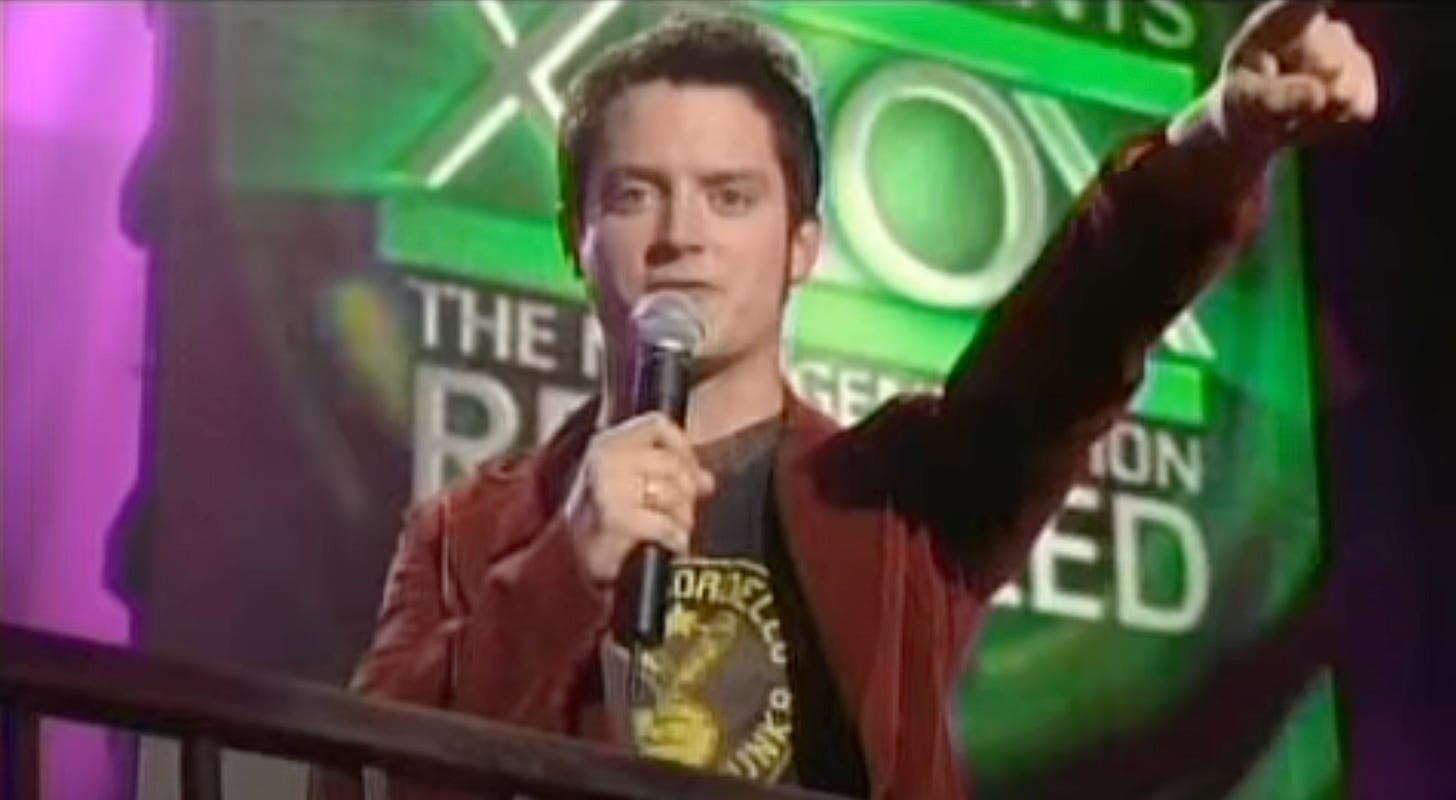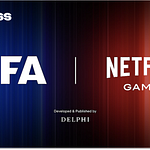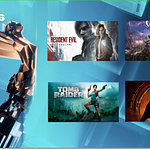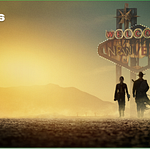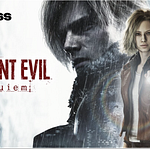Listen now on Apple, Spotify or YouTube
In This Edition
Games legend Peter Moore on…
- Following Dreamcast
- Xbox 360 vs PS3
- Winning over Rockstar
- The Red Ring of Death
Hello, welcome back to another week on The Game Business Show.
If you paid close attention last week, you’ll know I was trailing a big interview with Zynga this week. It’s a great interview (even if I do say so myself), but I’m going to make you wait a bit longer, because there is another chat I’ve been sitting on since we launched.
It is with former EA, Sega and Xbox leader (and Liverpool FC CEO) Peter Moore. The chat is a look back at the launch of Xbox 360 (20 years ago, if you can believe it). And it’s a piece that could run at any time this year, hence why I’ve been sitting on it.
It tells the story of an Xbox thoroughly beaten by PlayStation 2, and how it came together to compete more strongly in the console market. With the cuts last week across Xbox, and the division going through a period of transformation, I thought it might prove an interesting, and even insightful, look back at a key moment in the company’s history.
You can read the edited story below. Or check out the full interview above (or via your preferred podcasting platform). Enjoy!
20 years of Xbox 360: How Microsoft established itself as gaming superpower
To tell the story of Xbox 360 launch, you need to go back to its predecessor.
No, not the original Xbox, but a console Microsoft didn’t make: the Sega Dreamcast.
“I've often said the Dreamcast passed the baton to the Xbox 360 which, with Microsoft's resources, was able to take the Sega [online gaming] dream and build upon it,” said Peter Moore, who led Sega of America during the Dreamcast era, before joining the Xbox team in 2003.
Dreamcast was a useful case study for Xbox 360, and Moore a shrewd hire. The original Xbox had launched after the PS2 had come out. Sony had already established a strong lead that Microsoft couldn’t overcome. But the Xbox 360 was going to come out before PS3, just like the Dreamcast did with PS2.
But Dreamcast’s head-start didn’t help in the end. PS2 quickly eclipsed it and Sega was forced to exit the hardware business. And Moore watched how it happened.
“Fear, uncertainty, and doubt placed in the minds of the gamer,” he revealed. “They called Dreamcast a transition platform… ‘sure go buy one, but the moment the PlayStation 2 comes out in March of the following year, you're going to buy one of those’. And to their credit, they placed that doubt into the minds of gamers.
Console Wars: The Game
Ahead of the 360 launch, consultancy firm McKinsey gathered the Xbox leadership into a room to conduct a ‘wargaming’ scenario. The executives all took on different roles to see what might happen when 360 goes up against PS3. Moore was given the role of PlayStation boss Ken Kutaragi.
“And scaringly I won,” he remembered. “I took on the role of Ken Kutaragi and basically attacked what I thought the weaknesses of Microsoft and Xbox 360 and hard drive capabilities and all the price points… everything that you do in a wargaming environment. And I won, which shouldn't have happened.
“It's the art of war. You've got to get inside the head of your competitor, and then figure out how you can compete or neutralize their competitive advantage.”
So what was Moore’s version of Kutaragi thinking?
“It's Microsoft. They've got no legacy. We're going to, as we did with Sega, put them in a corner and we're going to place doubt in the minds of the gamer. They don't have the studios yet that we have. We still have the legacy of everything that comes out of Japan is truly authentic. And you've got a company that's more famous for Windows, Excel, PowerPoint and Word… How on earth can they be in the entertainment business?”
“I recall being completely immersed in that world of PlayStation and picking holes in Microsoft strategy.”
“I took on the role of Ken Kutaragi and basically attacked what I thought the weaknesses of Microsoft and Xbox 360”
One of the things Moore was aware of was that fear, uncertainty and doubt. At E3, ahead of the 360 release, Sony showcased a famous Killzone 2 video that was designed to impress audiences and blow its competitors out of the water. It had adopted the same strategy with Dreamcast.
“It was exactly the same tactics of creating a very expensive movie. But when the game came out, it was completely BS. I knew it that night when I watched it. I thought there's no way they're delivering this experience. They were doing the same thing to us as they did with Sega, which is go: ‘Alright, cute little Xbox 360 coming out, but the big boys will be out with the PlayStation 3, so you should hang around and wait for that. Because look what we can do.’”
Yet what worked on Sega, didn’t have the same impact on Microsoft.
“They're like politicians, right? You promise so that somebody buys it, but do you deliver on it? Probably not. But too late then, because you’ve got their vote,” Moore said.
“But the industry, and games journalists in particular, were going ‘wait, we've seen this seen this movie before’, no pun intended, ‘and based on what we think we know about the PlayStation 3… we're looking at this and there's no way they're going to deliver it.’”
The Xbox team had developed a number of strategies to try and outmanoeuvre Sony. One of those was in the way the console was announced and promoted. The marketing campaign began with a viral push called OurColony, where gamers were asked to form colonies online and complete various tasks. It was an alternative reality game (or ARG), and followed the popular Halo 2 ARG called I Love Bees.
“A core part of our team is Jay Allard,” Moore said. “Jay was the driving force behind all of this because that's the way his mind works. We couldn't just put up the same ads. We needed to show that we, being Microsoft, could speak to the community in a way that showed that we respected their intellect and actually tried to do things in a very different, quirky way.”
Of course, Microsoft didn’t rely on virality to get the Xbox 360 message across. The big reveal took place on May 12 on MTV, with a show hosted by Elijah Wood and featuring live music from The Killers.
“In the Dreamcast days, we launched on the [MTV Video Music Awards],” Moore explained. “For video game advertising, quarter of a century ago, [MTV] was a network that allowed you to get to who the gamers were at that time. Digital advertising still was in its nascency and hadn't kicked off to the level that obviously it is today.
“And you're also trying to get credibility still at this point in video games. It's not like it is today, where pretty much everybody plays, and everybody takes it seriously. It was still very much the classic ‘boys in their bedrooms’. A lot of people saw it as trivial. And also, MTV was the perfect platform during those days to be slightly rebellious and deliver a message to the demographic we needed to get to.”
Barely a week later, and Microsoft took Xbox 360 to E3 2005. It was an iconic E3, where Nintendo showcased Revolution (which became Wii), Sony had its infamous Killzone 2 demo, and Microsoft turned up with Xbox 360.
“We did a live demo of Gears of War with Cliffy B, and the guys from Epic showing off the Unreal Engine 3, which Gears of War was the poster child for.,” Moore recalled.
“It was just a monumental E3. It was when [Sony executives] Jack Tretton and Kaz Hirai decided that you were going to work overtime to afford a PlayStation 3 at $599. E3s… I must have done 15 of them, they do become a blur. But 2005 was a big one.”
To conclude the launch campaign, Xbox eschewed celebrity for something far more gamer-focused. The concept for the Zero Hour launch event was dreamed up during the summer, and involved renting large hangars at a US Air Force base in Palmdale, California. The aim was to create a mysterious, almost Area 51-vibe to the 360 launch. And those who were able to make the trip could play the console 24-hours early.
“Everything was bright, fluorescent green,” remembered Moore. “We decked out these massive hangers with white bean bags and demo units and made sure there was plenty of food and water. We let the gamers rush in, get settled on a beanbag, and they pretty much never moved for 24 hours.
“My marketing team did a brilliant job in a short period of time, and doing all of the work that was necessary to give it this kind of cool discovery vibe. Very similar to the things we’d done earlier with I Love Bees and OurColony,” Moore said.
A Grand Theft Auto Story
The other weakness Moore had identified with Xbox was that it didn’t have the first-party depth of PlayStation. Therefore, it had to be aggressive in winning over third-party developers.
“Microsoft, in a lot of ways, was disadvantaged in its legacy of who it was and what it makes and what services it delivers,” Moore said. “But the one thing that they were brilliant at, and still are, is third-party relations. Whether it's Dell, HP, IBM, or whether it's Activision, EA, or Ubisoft.
“And it was very much the team that came on board. George Peckham, Blake Fischer, John Smith… this seasoned team in working with third-parties. That's where Microsoft was able to flex its muscles and deliver. Having developers feel good and make money on your platform was key. And Microsoft was brilliant at that.
“It's a courtship. I would travel the world with them. Robbie Bach and I would go with George and Blake, and we would do whatever [third-parties] needed to make them feel part of our platform. I'm sure PlayStation did the same. But we had a real focus on delivering for third-parties.”
The biggest courtship was around Grand Theft Auto. Moore was eager to see Grand Theft Auto IV launch on Xbox 360 at the same time as PS3.
“We spent a lot of time in Take-Two’s office on Broadway in New York City,” Moore said. “A lot of time.
“You've got to win trust. We had to win over the Houser brothers, and all of the wildness of Take-Two/Rockstar. Even bringing [Microsoft CEO] Steve Ballmer into play to talk to the Housers at one E3 and convince them that we're for real.”
Not only did Xbox secure GTA IV for a simultaneous launch with PlayStation 3, it even signed a deal that saw the DLC launch on Xbox 360 first.
Call of Duty was king
Third-parties played a real crucial role on 360. When the console launched in 2005, Microsoft delivered a number of first-party exclusives including Perfect Dark Zero, Kameo: Elements of Power and Project Gotham Racing 3. But by far the biggest game was Call of Duty 2.
The Infinity Ward game launched first on PC, but was a console exclusive on Xbox 360, and it was huge. 605,000 Xbox 360 consoles were sold in the US in 2005, with Call of Duty 2 selling 506,000 units (Circana data). Just like today, Call of Duty was a major part of Xbox’s success in 2005.
“That's a good attach rate right there,” laughed Moore.
There were 19 launch games for 360, and that was another lesson from the Dreamcast era. Moore wished he had spread out some of those early Dreamcast games so that there was something coming out every month. But to do that on 360 involved convincing publishers to push things back.
“Publishers want to be there on day one. They want the hype and the focus that the console launches had, and still have.”
He continued: “You tick your boxes. You’ve got something like Perfect Dark Zero, bringing back Joanna Dark from the old days, so you’ve got a bit of nostalgia. Kameo was very different and showed off the visual fidelity. I demoed that a lot.
“This is the days when you can't launch without a driving title. So, Project Gotham Racing became, if you will, our Gran Turismo competitor, albeit slightly different type of driving experience. You’ve got your shooters. You've got your sports games [from EA Sports]. You’ve got a game for everybody. And then it's a question of sequencing releases. And those are difficult conversations with publishers who need to make their quarter or whatever. Our third-party team did a brilliant job in managing those conversations.”
The Red Rings
“I don’t think the industry would be anywhere close to what it is today if Microsoft wasn't involved”
The Xbox 360 established Microsoft as a credible player in the console market. PlayStation’s global reach meant that PS3 did outsell 360 in the end, but only just. It had lost nearly half its install base, whereas Xbox had increased nearly four-fold.
Of course, it wasn’t entirely plain sailing. Shortly after Xbox 360 came out, there were “little murmurings” from retailers about the number of units being returned. After six or seven months, Xbox started to become aware of an issue that would be known as the Red Ring of Death (RROD), where 360s would just stop working.
Xbox decided to earmark $1.15 billion to extend the console warranty. And that involved sending players a box overnight, getting them to send it back overnight, and then getting them a replacement overnight.
“That's where a lot of the money was,” Moore remembered. “The overnight FedEx, UPS and DHL or whatever was being used at that time.
“But the one thing I will always say is this was, for us, a defining moment. If we hadn't done what we did, I'm not sure the Xbox brand would be around today.”
Ultimately, it didn’t take the shine off what was a memorable generation.
“[Both Xbox 360 and PS3] grew the industry immensely,” Moore said. “We went nose to nose with each other, and got the best out of each other. And invested enormously with third-party publishers. The amount of money going into the industry was huge because of the competitive juices of mega corporations like Sony and Microsoft.”
He added: “Rising tide lifts all ships. Microsoft's entree into the market created a massive rising tide. They put billions of dollars into marketing, advertising, R&D, and I don’t think the industry would be anywhere close to what it is today if Microsoft wasn't involved.”
In the end, Moore remembers his time on Xbox 360 fondly.
“It was such a different vibe and environment for me, from being a president of Sega America, and bluntly fighting with my Japanese overlords on a regular basis. To being right in the middle of the decision making.
“There was nobody at Microsoft other than us that were making decisions. Bill Gates and Steve Ballmer allowed us to get on with it… and we’d check in with them. They both had a great interest, Bill in particular, in what we were doing. But they also allowed us to be off-campus. We were not part of what's known as the Borg. We developed this camaraderie. It was refreshing to be part of that and not having to look around for somebody to make a decision. The decision was ours.”
That’s it for today’s edition of The Game Business. We’ll be back on Thursday to look at some of the key game launches still to come in 2025. See you then.





